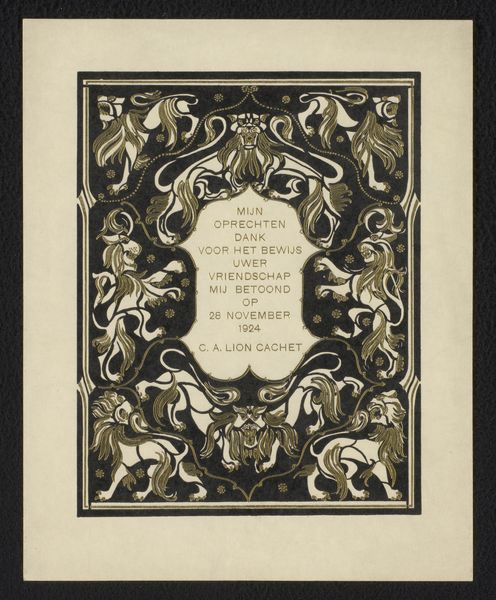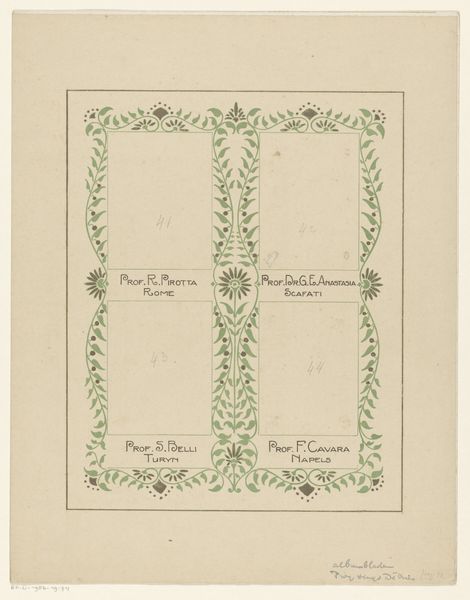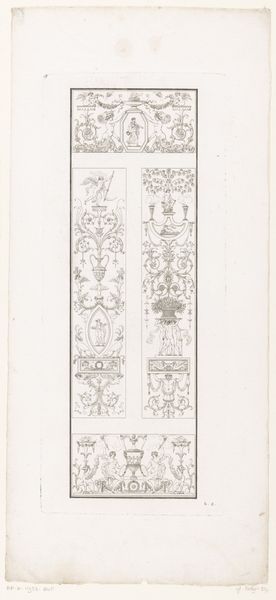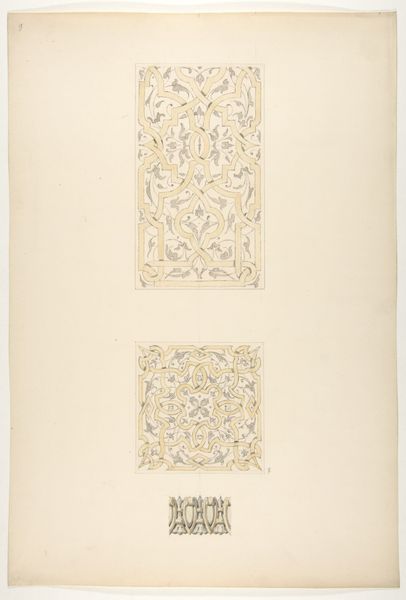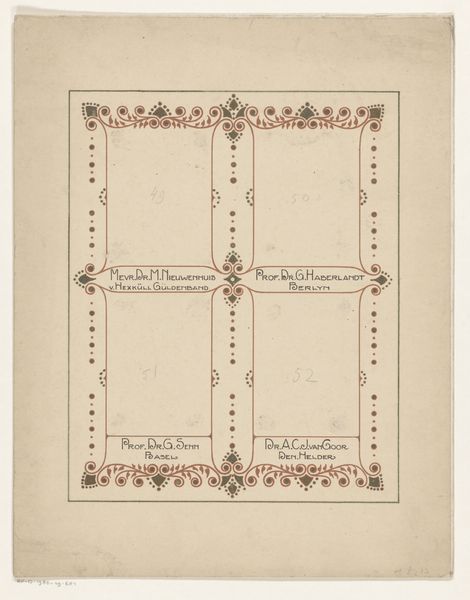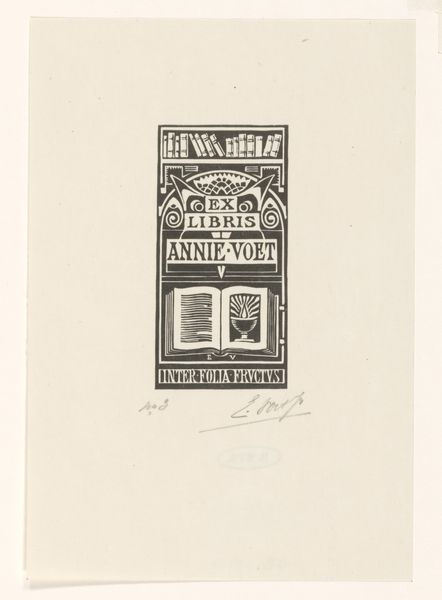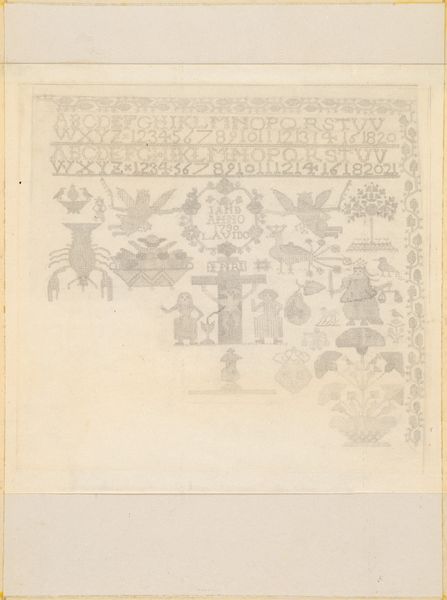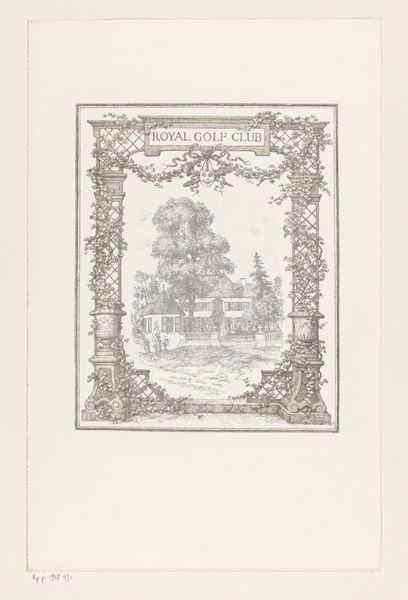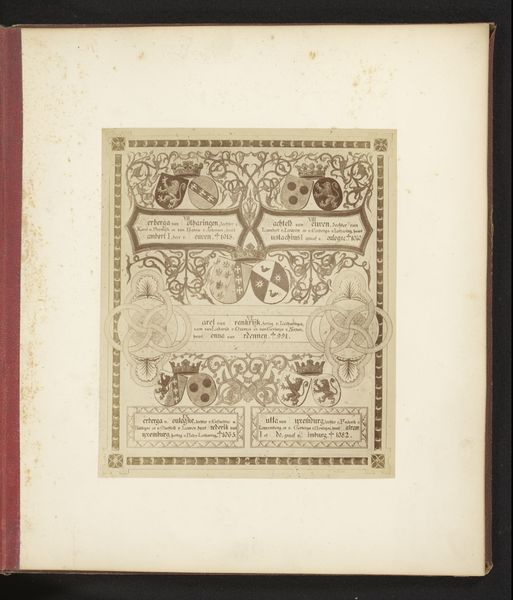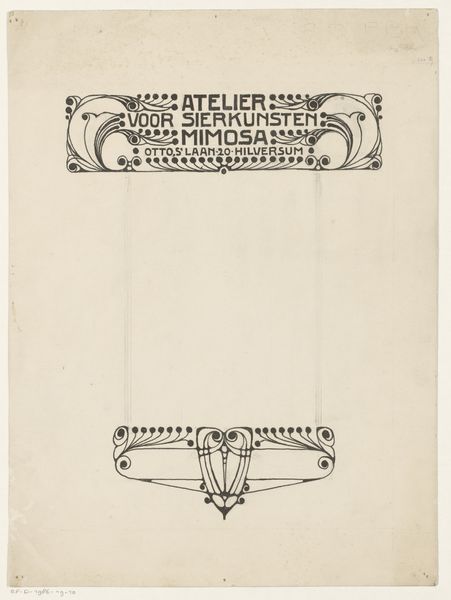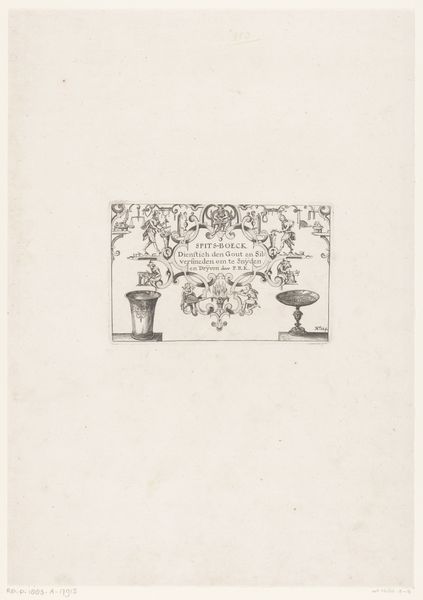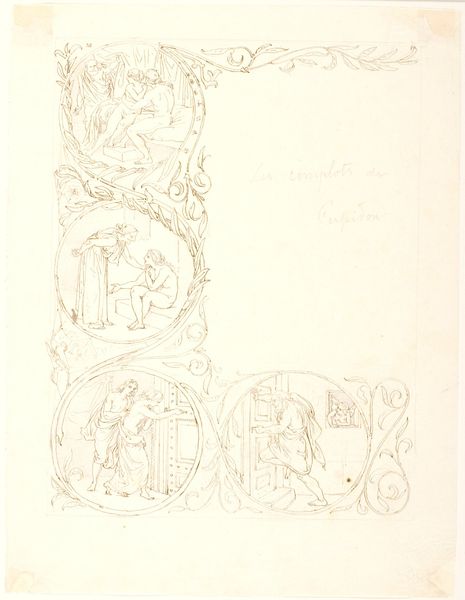
Titelpagina voor: M. Michel, Meesterstukken der XIXe eeuwse schilderkunst 1878 - 1932
0:00
0:00
graphic-art, print, typography
#
graphic-art
#
art-nouveau
# print
#
pen illustration
#
book
#
old engraving style
#
ink line art
#
typography
#
linocut print
#
decorative-art
Dimensions: height 462 mm, width 350 mm
Copyright: Rijks Museum: Open Domain
Curator: This elegant graphic, created between 1878 and 1932 by Johan Thorn Prikker, serves as the title page for M. Michel's book, "Masterpieces of 19th-Century Painting." Editor: My first impression is one of serene intricacy. It feels like a hushed whisper of nature trying to be heard over the declarative title, almost like the echo of a lost myth. Curator: Indeed, Prikker was a key figure in the Dutch Art Nouveau movement. You see it in the stylized, decorative motifs - the rhythmic flow of lines and shapes. This is more than just information; it's an experience, a mood. Editor: I see the book’s title, literally centered, attempting to command visual attention and historical focus. How can we understand this title page within a context where art history itself was being codified and presented through such publications? The very act of curating and naming "masterpieces" carries immense power. Curator: It’s that dance, isn’t it? Between asserting historical narratives and allowing the soul of the art to simply breathe. The Art Nouveau style, I feel, allowed the 19th century a softened, almost romantic exit. The design elements push back against any definitive narrative. They are more invitations to dream than decrees of truth. Editor: Absolutely. It brings forward a moment in art history when definitions of quality and taste were being formed. Which, as we know, left out numerous artists - women, people of color - deemed as other than. This book, framed by these botanical motifs, suggests an enclosed, curated space where certain narratives flourished, and others withered. Curator: Perhaps Prikker intuitively questioned that curatorial dominance through a more lyrical style, using it as a vessel to question that power, adding his own vision with quiet insistence. Editor: So this is a piece reflecting a battle, on the one hand, to organize and classify, and on the other, an artist wanting to make sure that wildness always breaks in, which reminds me, doesn't the framing almost suggest that a revolution is always near? Curator: Perhaps a visual revolution of thought, each time we engage. It offers a space to challenge the established. Editor: Nicely put. Now when I return to look at the artwork in the future I'll be sure to carry those ideas with me. Thanks!
Comments
No comments
Be the first to comment and join the conversation on the ultimate creative platform.
